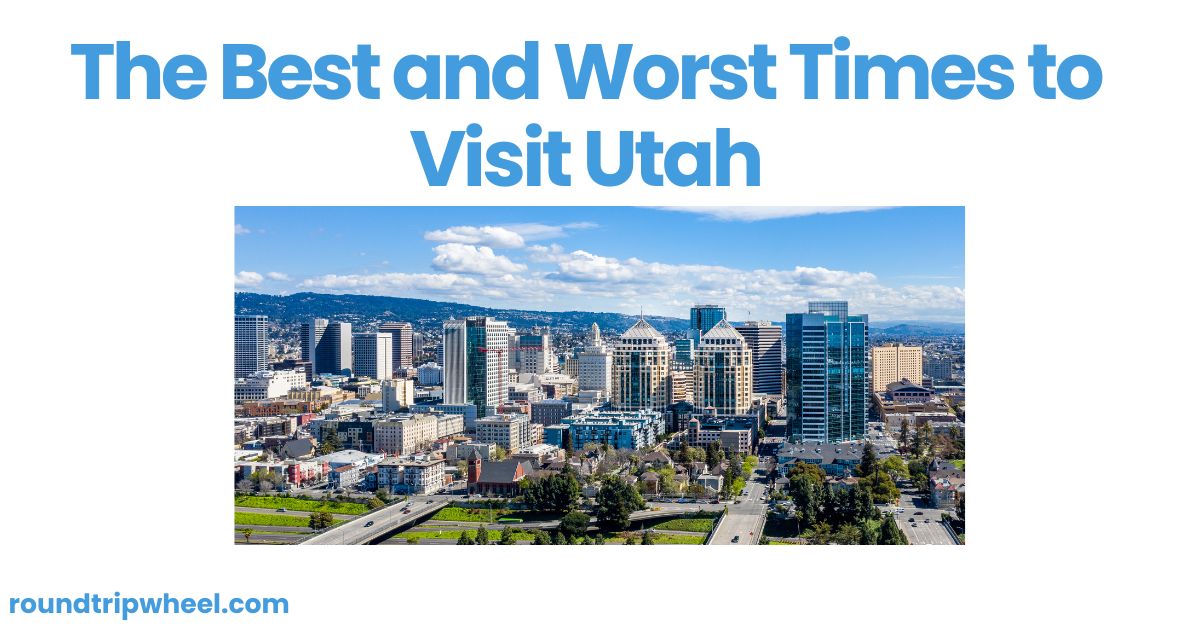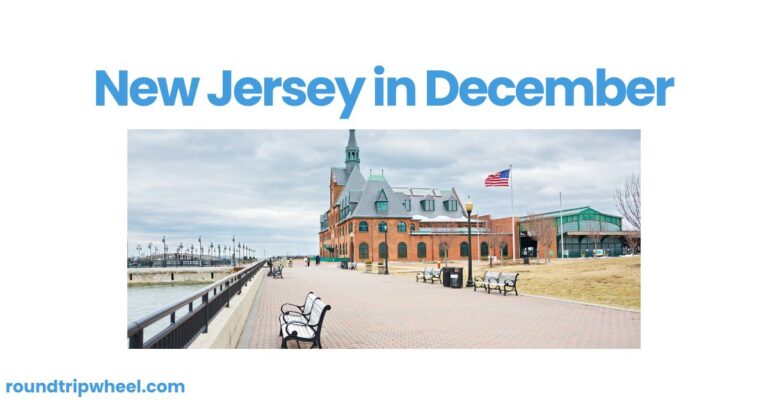The Best and Worst Times to Visit Utah

Utah, a land of striking desert landscapes, towering red rock formations, and breathtaking natural wonders, beckons adventure-seekers and outdoor enthusiasts from around the world. With its diverse array of national parks, including the iconic Zion, Arches, Bryce Canyon, Canyonlands, and Capitol Reef, Utah offers a world of exploration and awe-inspiring experiences. However, timing your visit to this captivating state can greatly impact your overall experience, as the weather, crowds, and accessibility to various attractions can vary significantly throughout the year.
The Best Times to Visit Utah
Spring (April-May) and Fall (September-October)
Spring and fall are widely considered the best times to visit Utah, offering a delightful balance of mild weather, fewer crowds, and stunning natural scenery. During these shoulder seasons, the temperatures are generally comfortable, ranging from the mid-60s to low 80s Fahrenheit (18-28°C), making outdoor activities like hiking, camping, and sightseeing more enjoyable.
In the spring, Utah’s national parks come alive with vibrant wildflowers, cascading waterfalls, and lush greenery, creating a truly picturesque backdrop for your adventures. The cooler temperatures also make this an ideal time for strenuous hikes, such as the iconic Angel’s Landing in Zion National Park or the challenging Navajo Loop Trail in Bryce Canyon.
Fall, on the other hand, brings a different kind of beauty to Utah’s landscapes. The changing colors of the aspen and cottonwood trees paint the canyons and cliffs in shades of golden yellow, fiery red, and deep oranges, creating a truly spectacular display of nature’s artistry. The crisp autumn air and fewer crowds make this season a prime time for exploring the parks at a more leisurely pace.
Advantages of visiting in spring and fall:
– Mild temperatures for comfortable outdoor activities
– Fewer crowds and more peaceful experiences in the parks
– Vibrant wildflowers in spring and stunning fall foliage
– Lower accommodation and travel costs compared to peak seasons
Early Summer (Late May-Early June) and Late Fall (Late October-Early November)
While summer and winter have their own unique charms, the transitional periods of early summer and late fall can also offer fantastic opportunities to experience Utah’s natural wonders. During these times, the weather is generally pleasant, with warm days and cool nights, making it ideal for exploring the parks without the scorching heat or freezing temperatures.
In early summer, the parks are lush and green, with blooming wildflowers and flowing streams, but the crowds are still relatively manageable compared to the peak summer months. Late fall, on the other hand, offers crisp, cool weather and the chance to witness the last bursts of vibrant foliage before the winter sets in.
Advantages of visiting in early summer and late fall:
– Pleasant weather for outdoor activities
– Fewer crowds compared to peak seasons
– Opportunities to witness seasonal transitions in the parks
– Potentially lower travel costs compared to peak seasons
The Worst Times to Visit Utah
Summer (July-August)
While summer is a popular time for many to visit Utah, it can also be one of the most challenging seasons to fully enjoy the state’s natural wonders. The scorching summer heat, especially in the lower-elevation deserts and national parks like Arches and Canyonlands, can be intense, with temperatures frequently reaching well over 100°F (38°C). This extreme heat can make hiking and outdoor activities not only uncomfortable but also potentially dangerous.
Additionally, the summer months coincide with school vacations, leading to larger crowds and increased competition for accommodations, transportation, and access to popular trails and viewpoints. Some park facilities and services may also be limited or closed due to the heat and increased demand.
Disadvantages of visiting in summer:
– Extreme heat, especially in lower-elevation areas
– Larger crowds and increased competition for resources
– Potential for park facilities and services to be limited or closed
– Higher accommodation and travel costs due to peak season demand
Winter (December-February)
While Utah’s winter can be a magical time, with snow-covered landscapes and stunning vistas, it also presents unique challenges for visitors. The colder temperatures, heavy snowfall, and potential for icy conditions can make accessing certain areas and trails within the national parks difficult or even impossible.
Many park facilities, roads, and scenic drives may be closed during the winter months, limiting access to popular attractions. Additionally, some accommodations and services in and around the parks may have reduced hours or be closed entirely during this season.
However, for those prepared for the winter conditions and interested in winter sports, Utah’s ski resorts, such as Park City, Deer Valley, and Snowbird, offer world-class skiing and snowboarding opportunities.
Disadvantages of visiting in winter:
– Colder temperatures and potential for heavy snowfall and icy conditions
– Limited access to some park facilities, roads, and trails due to closures
– Reduced hours or closures of accommodations and services in and around parks
– Potential challenges for those unprepared for winter conditions
Considerations for Your Visit
Regardless of when you plan to visit Utah, it’s essential to be prepared for the specific conditions and challenges that each season may bring. Here are some additional tips to help you make the most of your Utah adventure:
1. Check Park and Weather Conditions: Before your trip, research the current conditions and any potential closures or advisories for the parks and areas you plan to visit. Park websites and local weather reports can provide valuable information to help you plan accordingly.
2. Pack Appropriately: Utah’s diverse landscapes and varying elevations can lead to significant temperature differences. Be sure to pack layers, including warm clothes for cooler mornings and evenings, as well as sun protection, such as hats, sunglasses, and sunscreen, for the warmer hours.
3. Stay Hydrated: Regardless of the season, Utah’s dry climate can lead to dehydration. Carry plenty of water and consider electrolyte replenishment drinks, especially if you plan on engaging in strenuous activities.
4. Respect Nature: Utah’s national parks and natural areas are delicate ecosystems. Practice Leave No Trace principles, stay on designated trails, and follow all park regulations to help preserve these wonders for future generations.
5. Consider Guided Tours or Outfitters: For those interested in more adventurous activities, such as canyoneering, rock climbing, or backcountry hiking, consider hiring experienced guides or outfitters who can provide the necessary equipment, expertise, and safety measures.
By carefully considering the best and worst times to visit Utah, you can maximize your chances of enjoying the state’s natural wonders to the fullest while minimizing potential challenges and discomforts. With proper planning and preparation, your Utah adventure can be a truly unforgettable and awe-inspiring experience.

About Author
Hey there, fellow explorers! I’m Mark Rodriguez, a big fan of adventures and always hungry for more. Packed with stories and a trusty camera, I’m on a mission to explore cool places around the world.
I love diving into new cultures and landscapes. As a travel writer, my goal is to get you excited about stepping out of your comfort zone, trying new things, and discovering the awesome magic our world has.
Check out my blog for cool stories, travel ideas, and helpful tips to plan your own amazing getaway!





